The role of confocal microscopy in the dermato-oncology practice
- PMID: 21505576
- PMCID: PMC3056424
The role of confocal microscopy in the dermato-oncology practice
Abstract
Reflectance-mode confocal microscopy (RCM) is a new in vivo skin imaging technique. We present our one-year experience in RCM examinations in skin tumors and the retrospective analysis of patients enrolled in the Dermatological Department of 'N. Paulescu' Institute using the Fotofinder Dermoscope IIŴ for the dermatoscopy analysis and VivaScope 1500Ŵ for in vivo RCM. We established the rank of RCM in the complex algorithm of skin cancer diagnose, showing that the presented experience can open new possibilities to implement this automated image analyzing system in the routine practice. Our analyzed cases clearly showed that confocal microscopy, therefore, optical biopsy, could guide the clinician towards an accurate diagnosis before surgical removal. Moreover, we emphasized that the development of this technique increases the potential of future teledermatologic applications.
Keywords: dermatoscopy; optical biopsy.
Figures

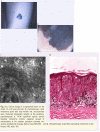
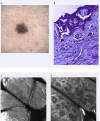
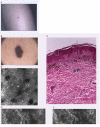

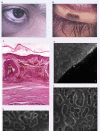
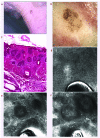
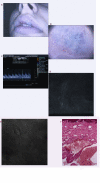
References
-
- Curiel–Lewandrowski C, Williams CM, Swindells KJ, Tahan SR, Aster S, Frankenthaler RA, Gonzalez S. Use of In Vivo Confocal Microscopy in Malignant Melanoma: an Aid in Diagnosis and Assessment of Surgical and Nonsurgical Therapeutic Approaches. Arch Dermatol. 2004;140(9):1127–1132. - PubMed
-
- Gerger A, Koller S, Weger W, Richtig E, Kerl H, Samonigg H, Krippl P. Sensitivity and Specificity of Confocal Laser–Scanning Microscopy for In Vivo Diagnosis of Malignant Skin Tumors. Cancer. 2006;107(1):193–200. - PubMed
-
- Rajadhyaksha M, Grossman M, Esterowitz D. In vivo confocal scanning laser microscopy of human skin: melanin provides strong contrast. J Invest Dermatol . 1995;104:946–952. - PubMed
-
- Diepgen TL, Mahler V. The epidemiology of skin cancer. Br J Dermatol. 2002;146:1–6. - PubMed
-
- Green A. Changing patterns of non–melanoma skin cancer. Epithelial Cell Biol . 1992;(1):47–51. - PubMed
Publication types
MeSH terms
LinkOut - more resources
Full Text Sources
Other Literature Sources
Medical
